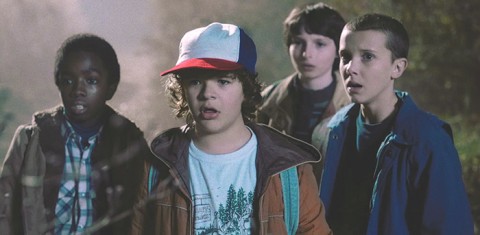The next monster
Stranger Things reassures us that the stories of the past can give us the courage to face whatever danger looms.

The 1980s were famous as the era of the missing child. The era was brutally announced when six-year-old Etan Patz went missing in 1979 from his home in lower Manhattan. In 1983, Adam, the TV movie detailing the abduction of Adam Walsh, captivated the nation when photos of 50 missing children were placed at the end credits. By 1984, photos of missing children had become ubiquitous on milk cartons, and Saturday morning cartoons built plotlines around stranger danger.
Stranger Things, the new Netflix show from Matt and Ross Duffer, takes us back into that era to explore the meaning of safety in both childhood and adulthood. It begins with the abduction of a boy named Will Byers by a monster that gained entrance to our world when a mysterious government experiment went wrong. The monster absconds with Will to the “upside-down world,” a place that resembles our own world but is filled with dangerous monsters and toxic air. Over the course of the season, Will’s friends and family slowly unravel the puzzle of his whereabouts and courageously enter government facilities and the upside-down world to save the missing child.
Stranger Things is lovingly built from the reclaimed wood of ’80s movies like E.T., Carrie, The Thing, Firestarter, and A Nightmare on Elm Street. The Duffer brothers make no attempt to hide their inspiration. They are confident that those who weaned themselves on these films will understand the difference between theft and homage. The pop-culture pastiche—Dungeons and Dragons, Eggo waffles, Huffy bikes—helps build a story that taps into an anxiety that connects these stories of the past with our lives today. At its heart, Stranger Things is about the ways the fears of childhood turn into the anxieties of adulthood.





